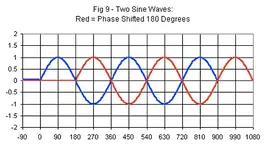C
Captain Whisky
New member
So I think that I understand the concept of being out of phase and that if one waveform is 180 degrees out of phase with another then one of them will need to be reversed correct?
But what about if it is only slightly out of phase? Take a a look at these two guitar tracks that don't seem to match up perfectly. Are they out of phase and is this significant enough that it should be corrected?
View attachment 83082
![ATTACH]](/bbs/proxy.php?image=http%3A%2F%2F%5BATTACH%3DCONFIG%5D83083._xfImport%5B%2FATTACH%5D&hash=0c23261dca58174634d23a3c00c1398c)
Thanks
But what about if it is only slightly out of phase? Take a a look at these two guitar tracks that don't seem to match up perfectly. Are they out of phase and is this significant enough that it should be corrected?
View attachment 83082
Thanks

Last edited:




